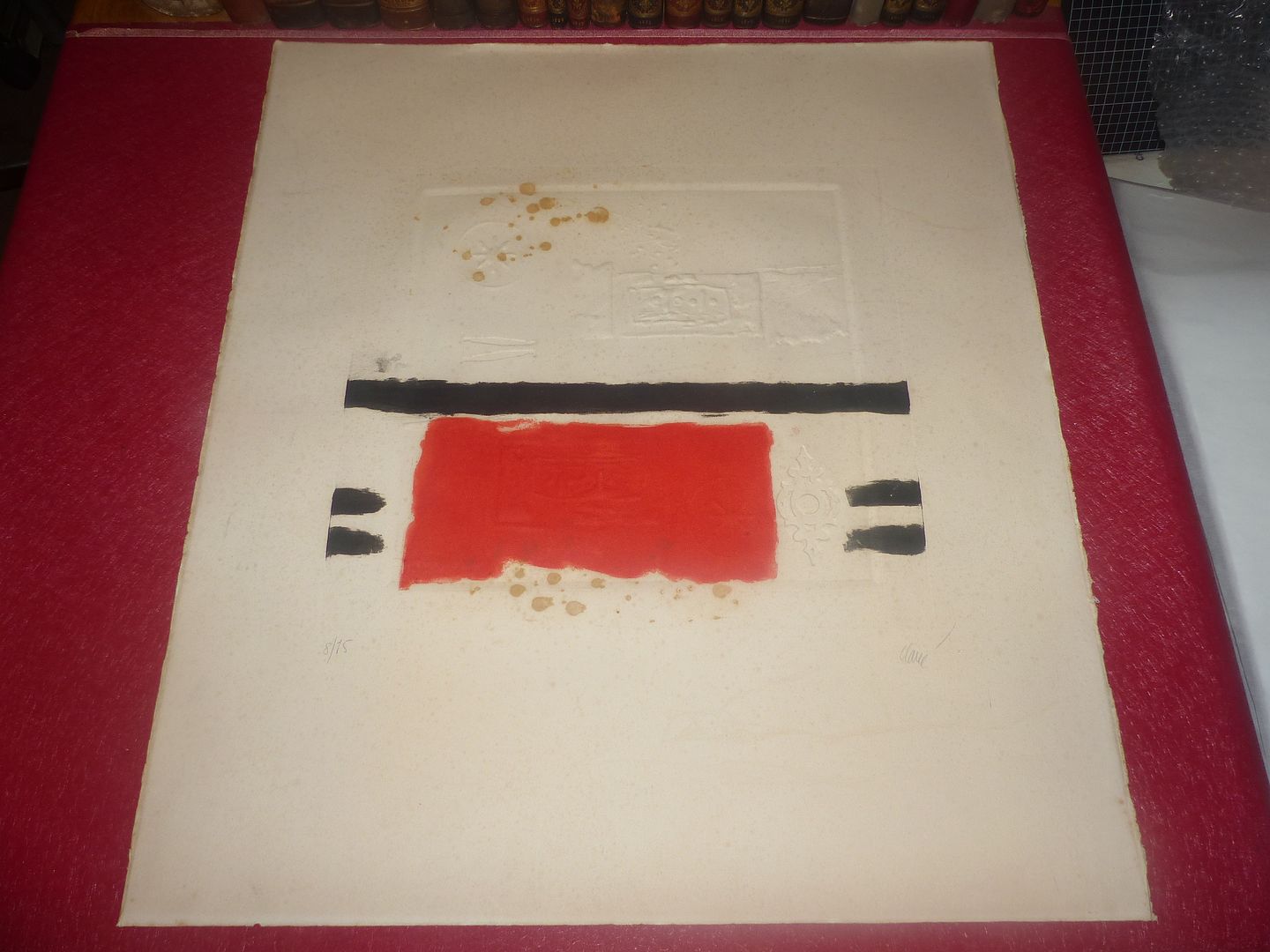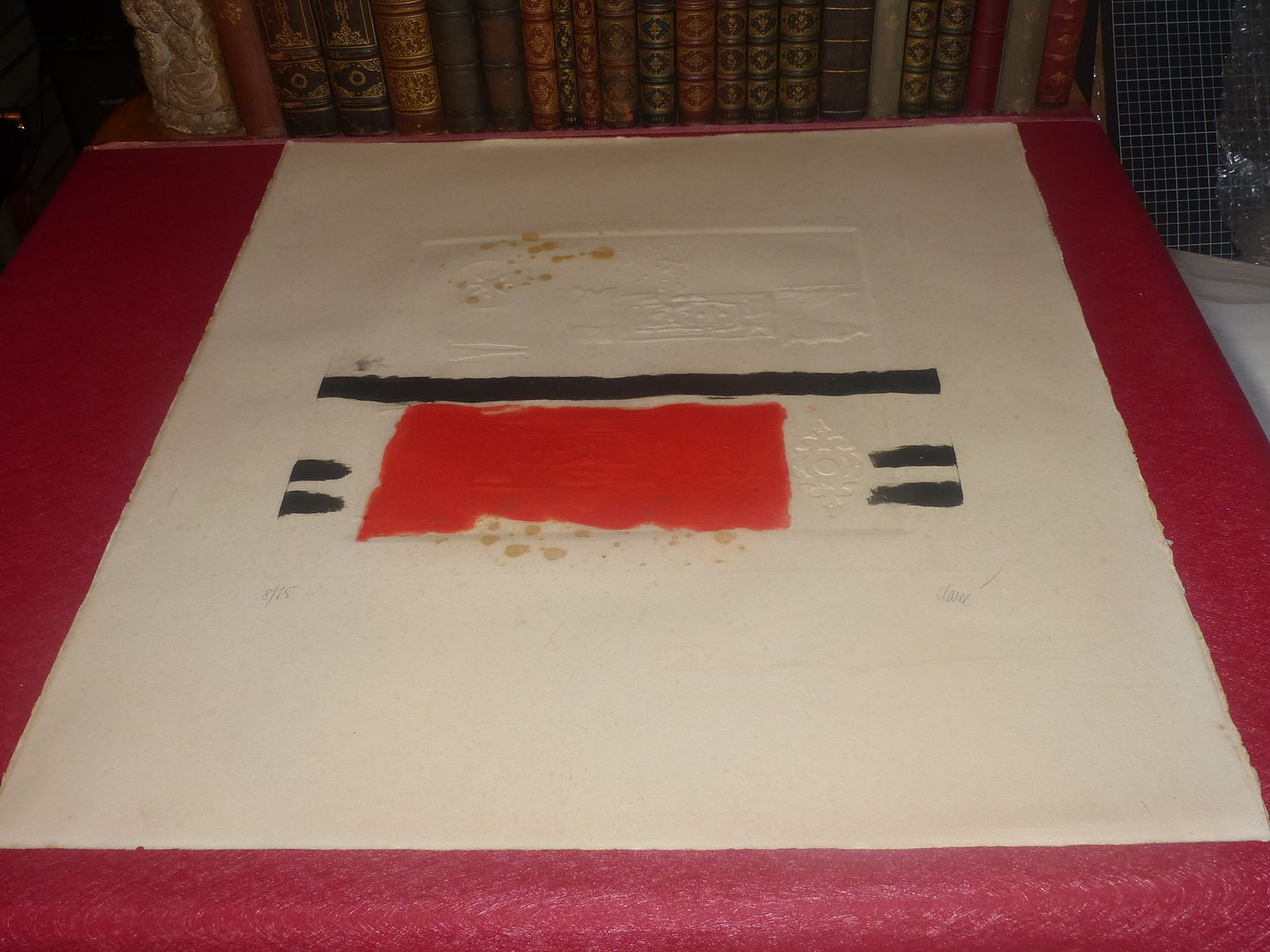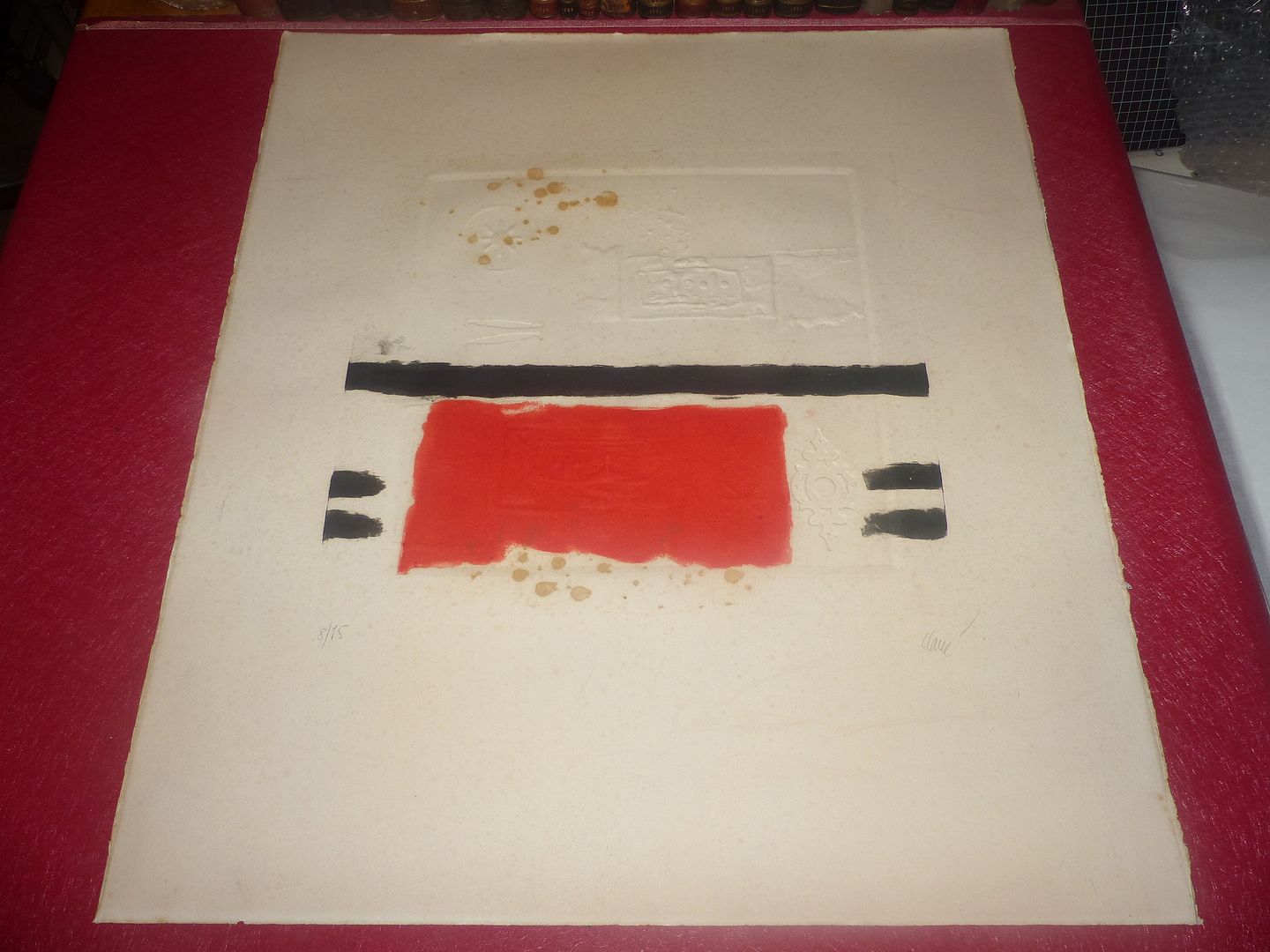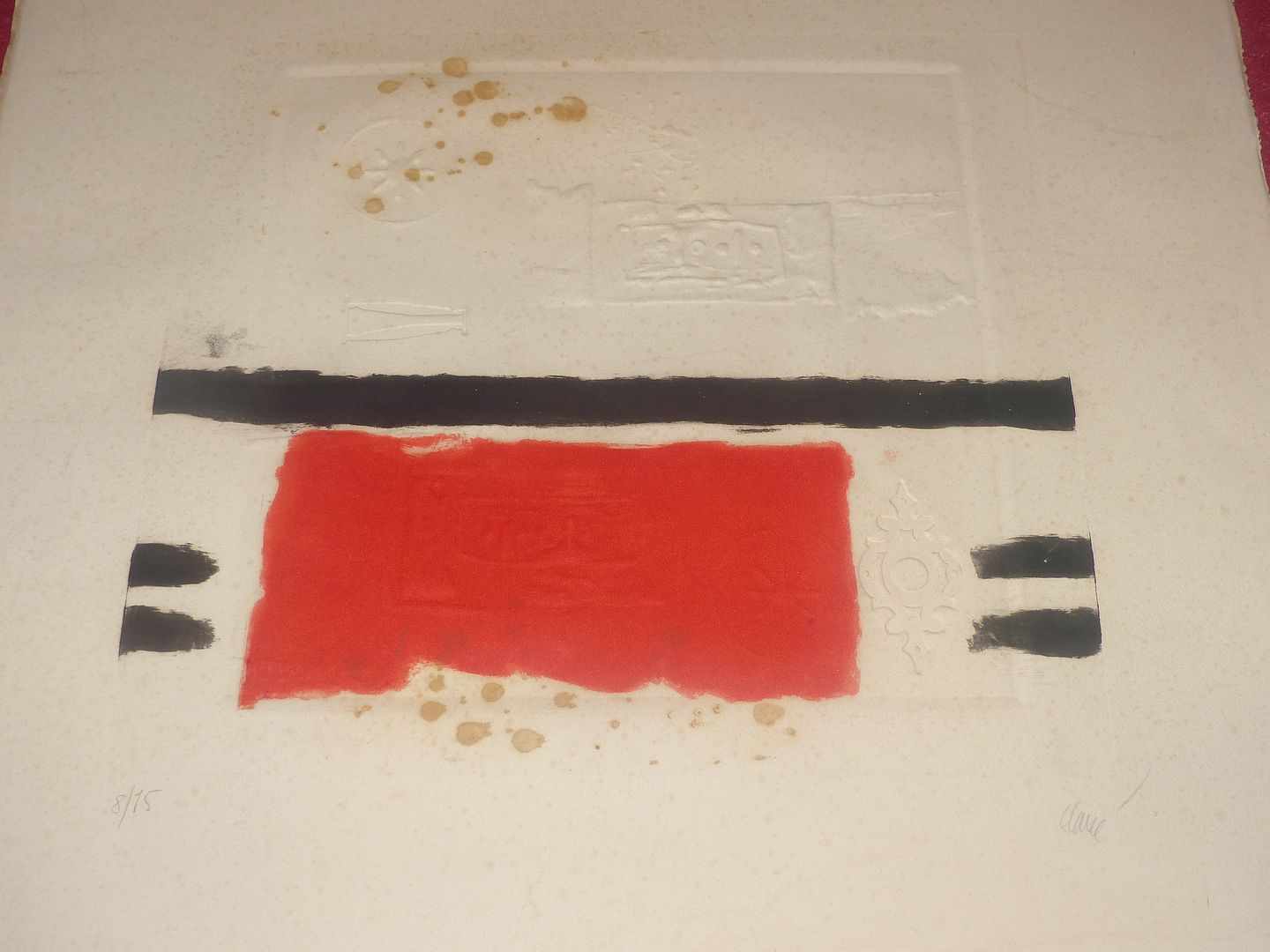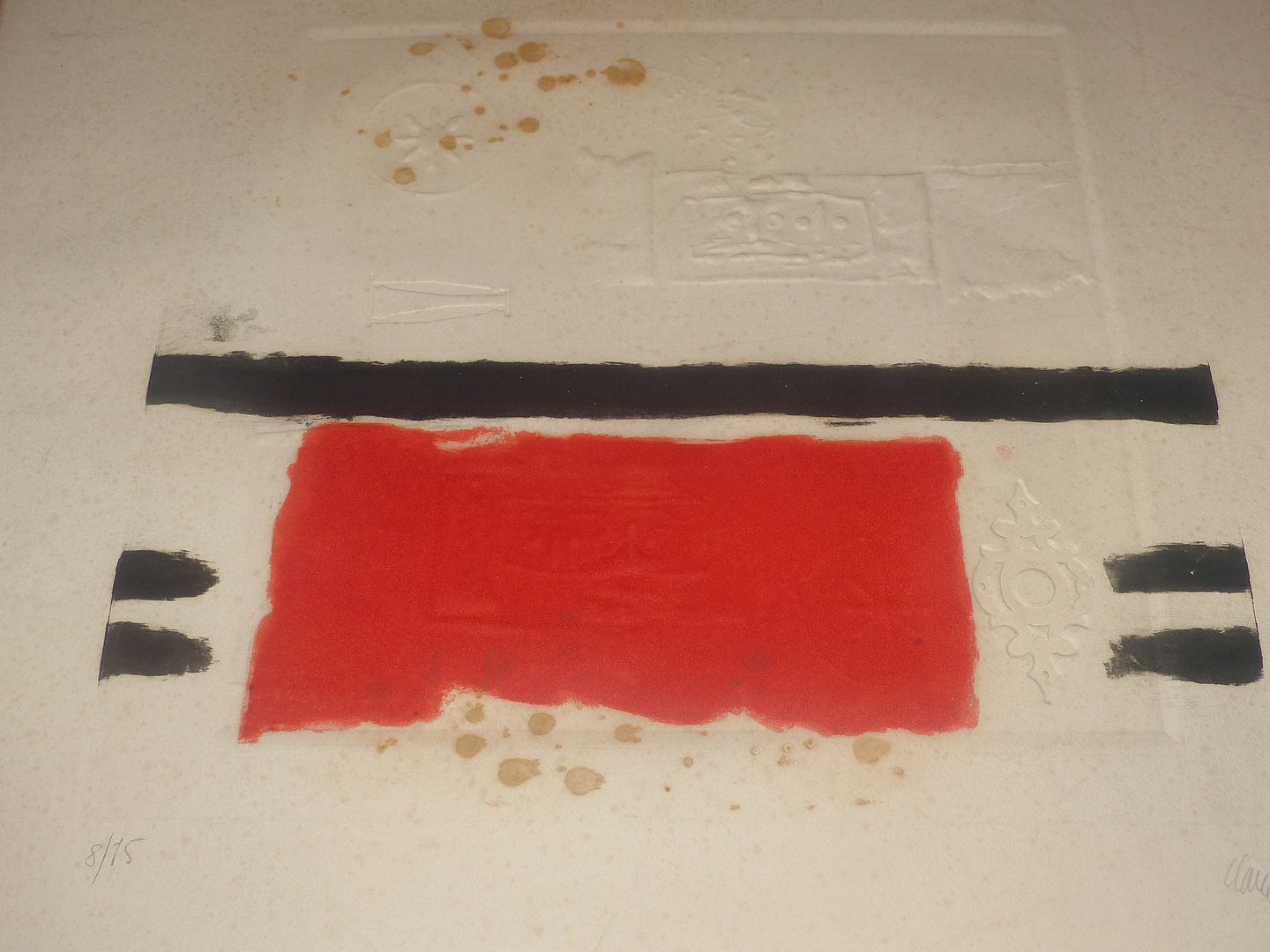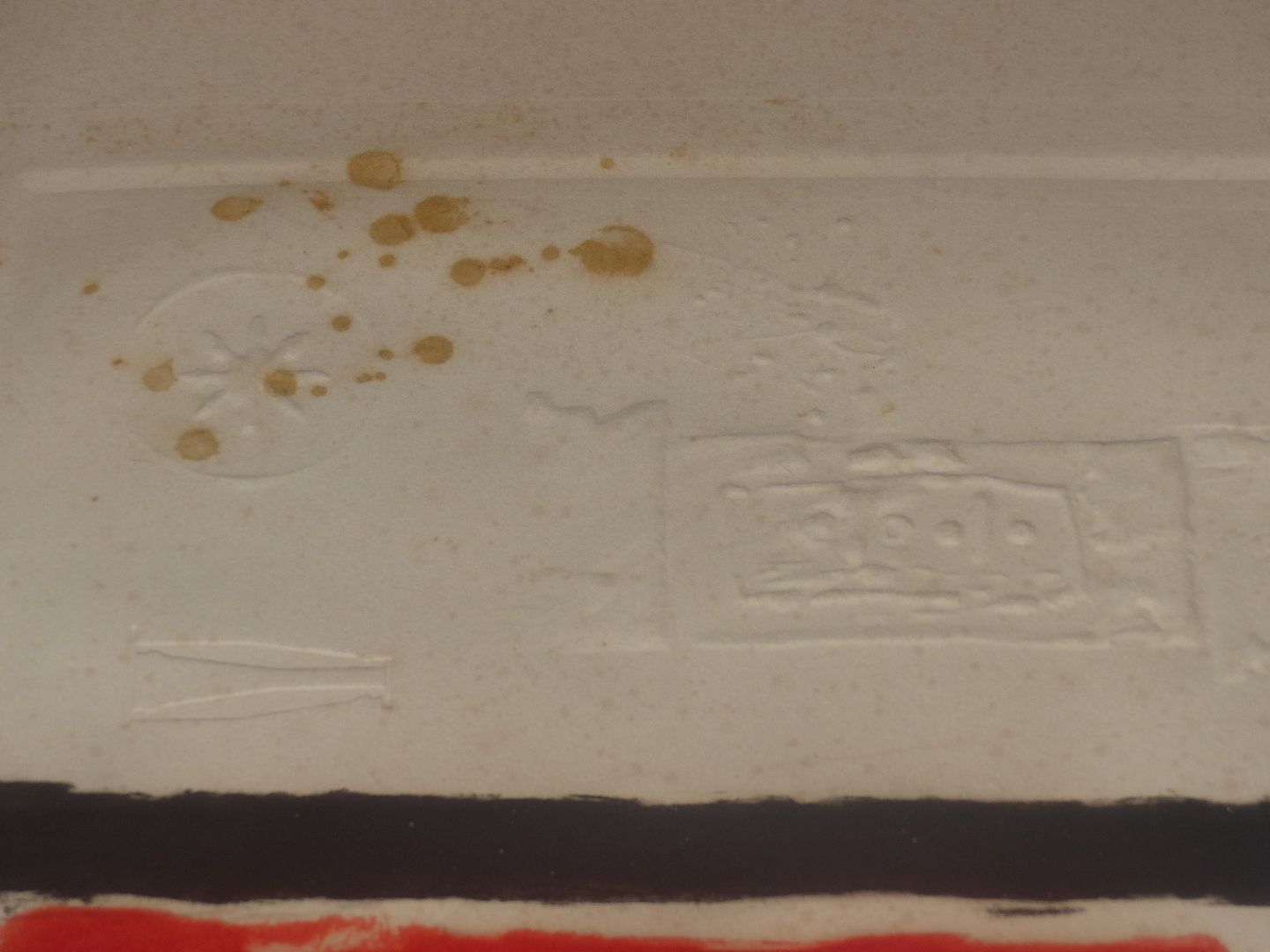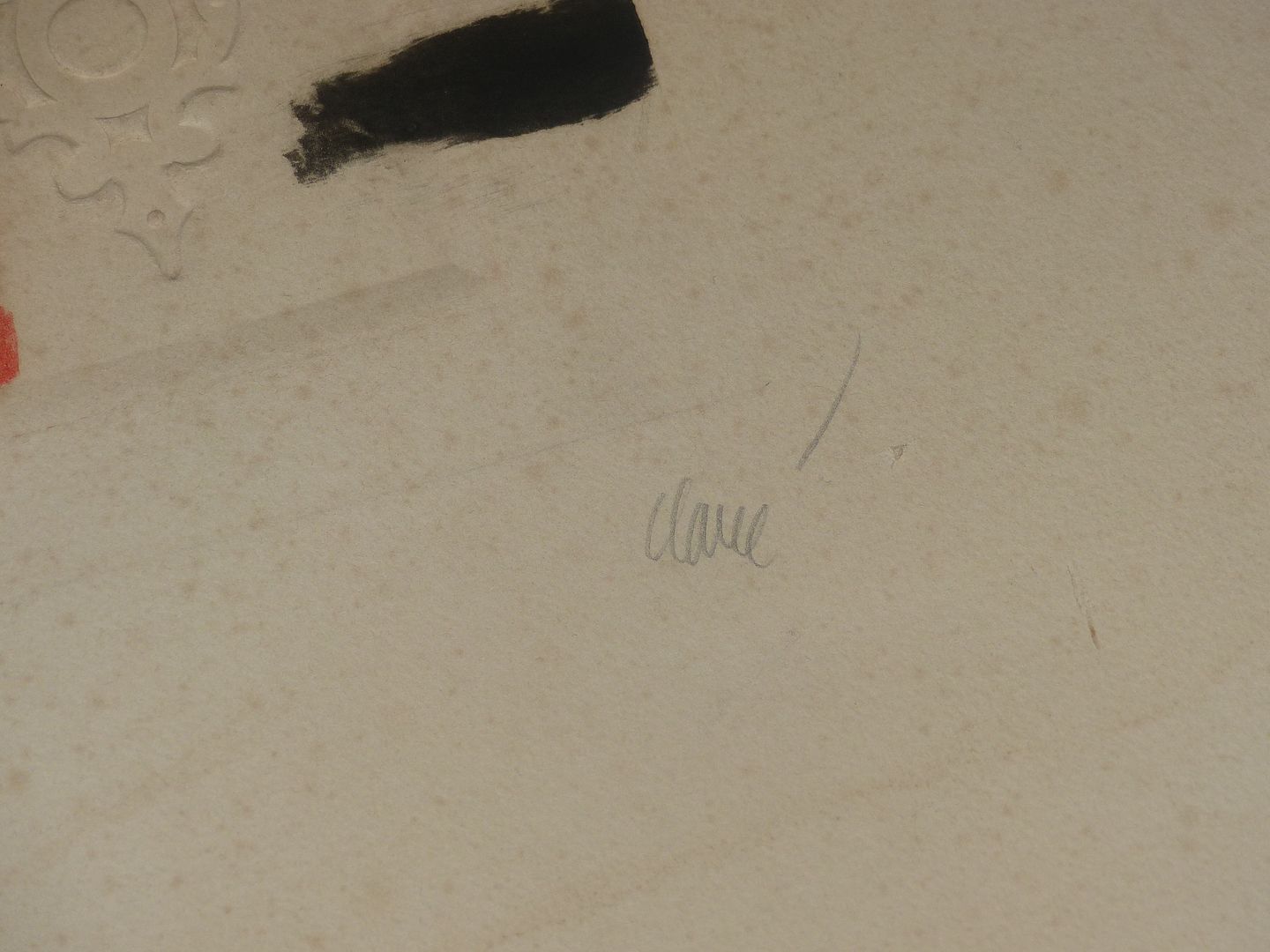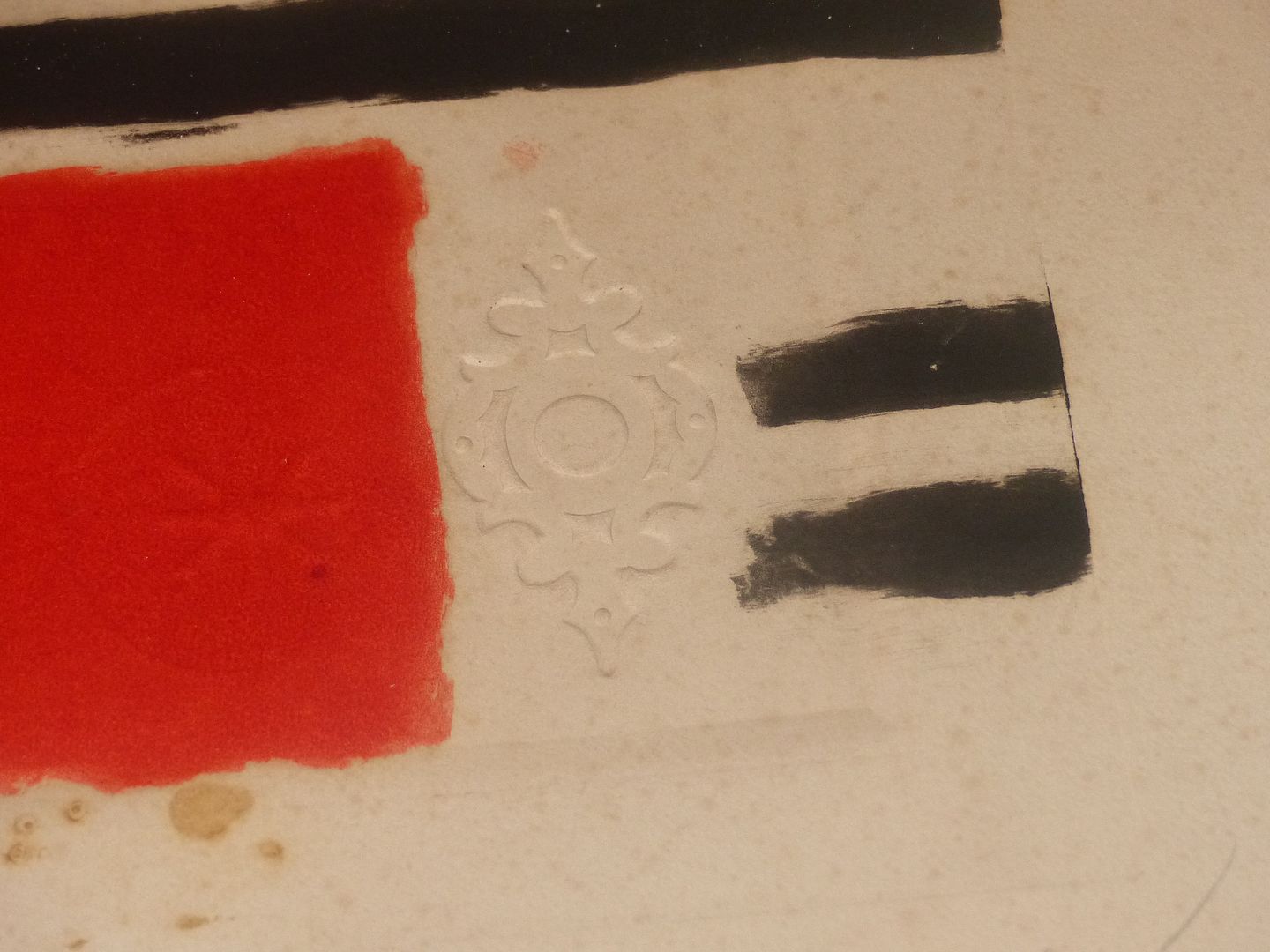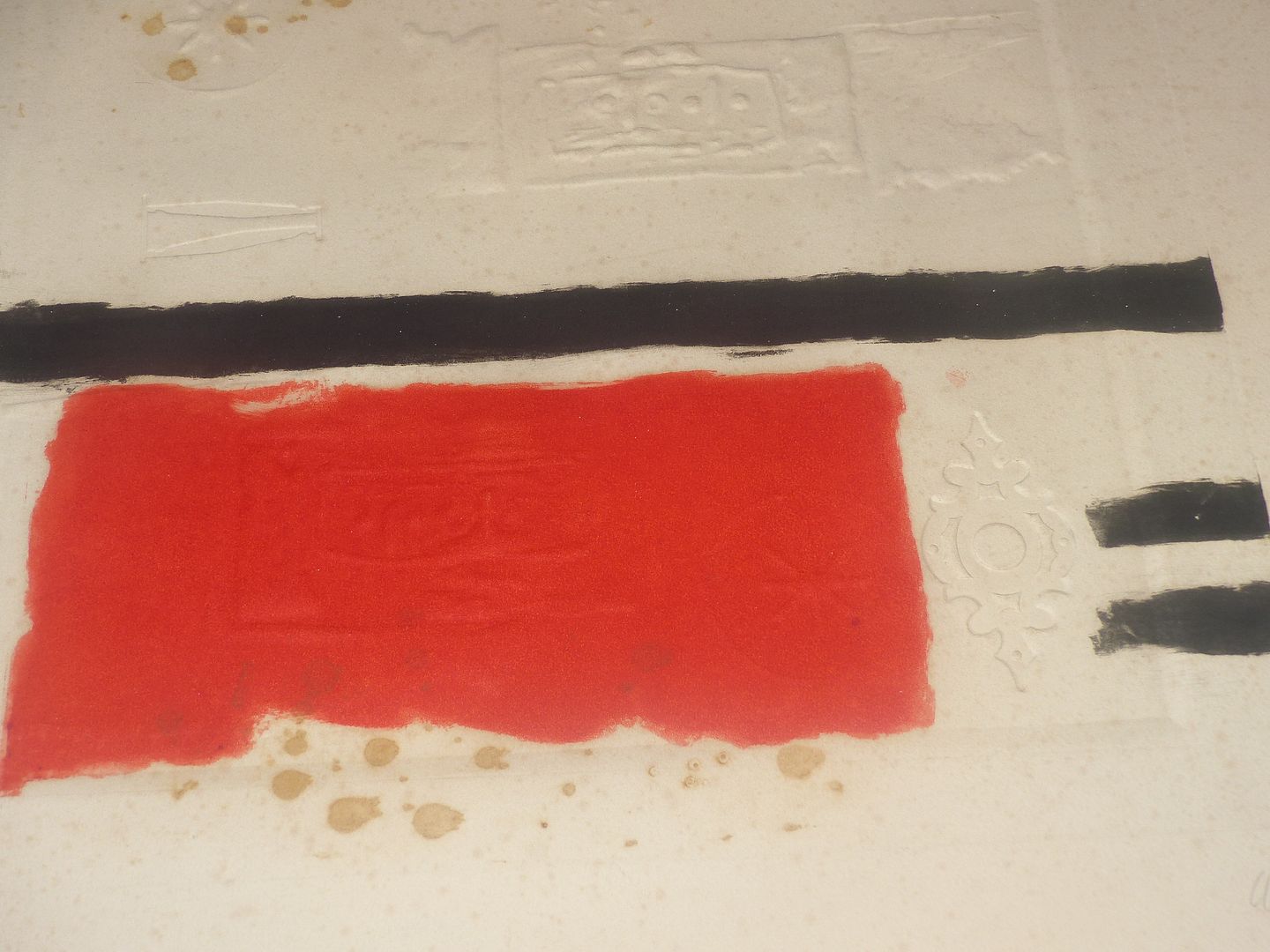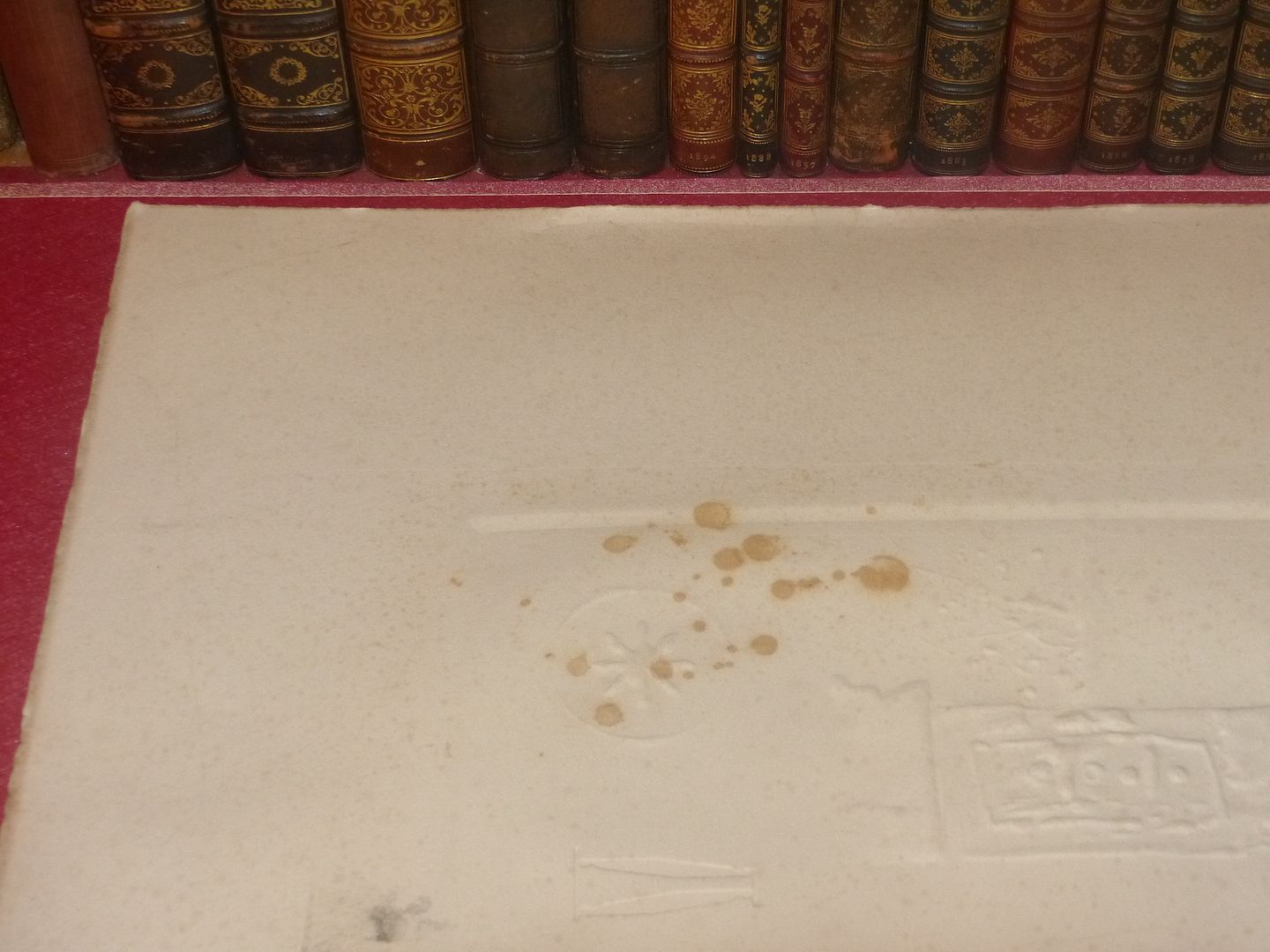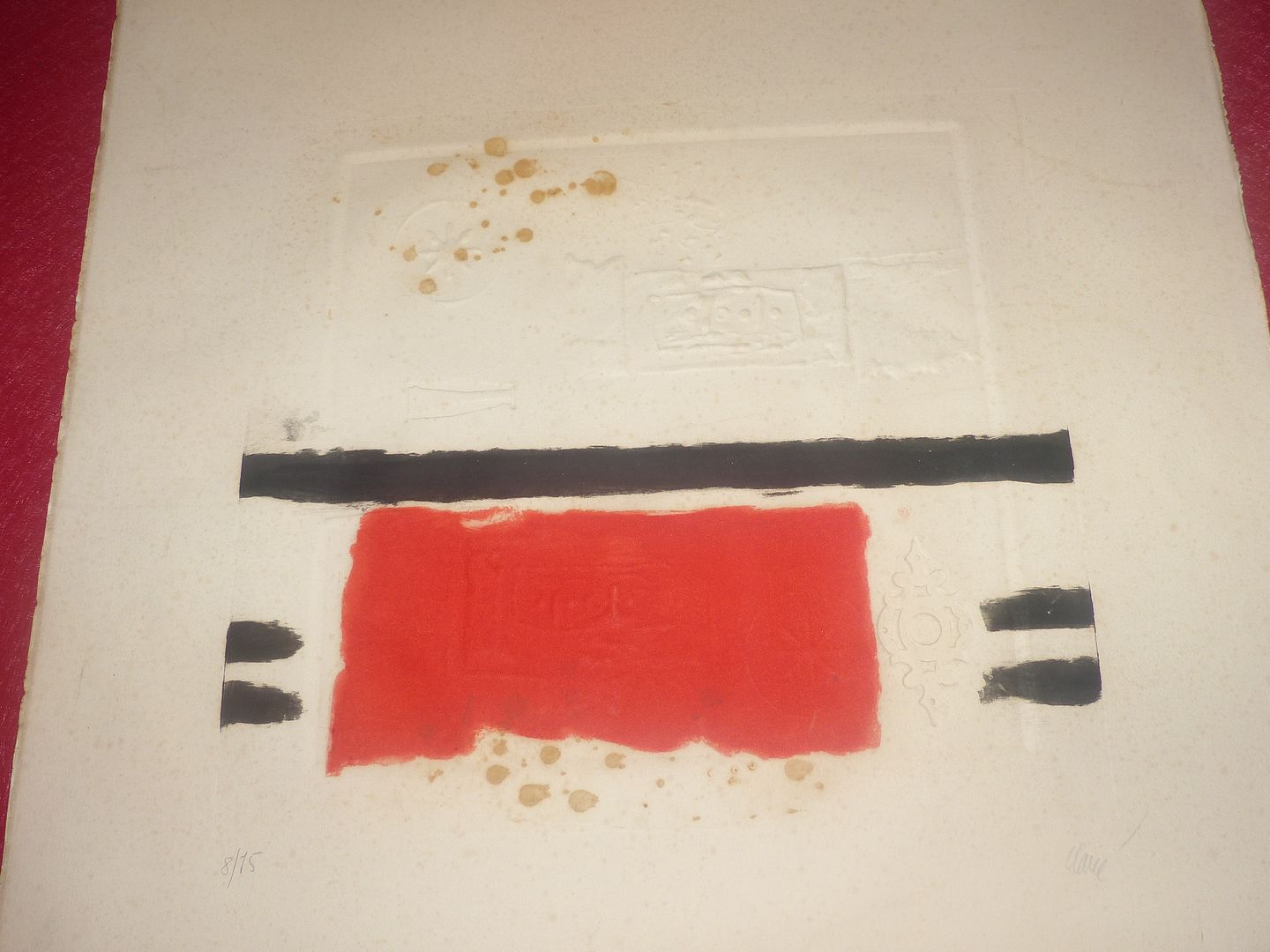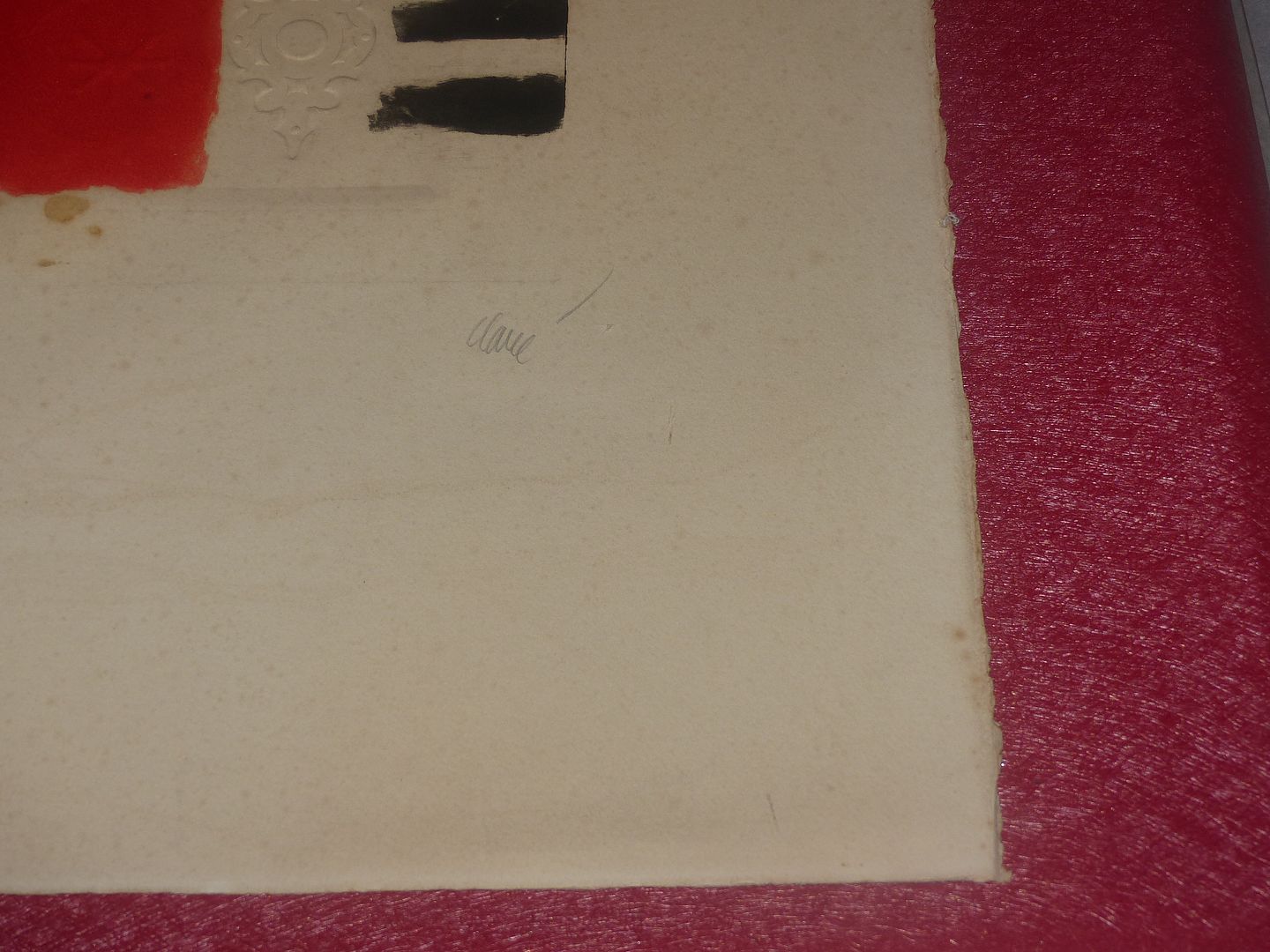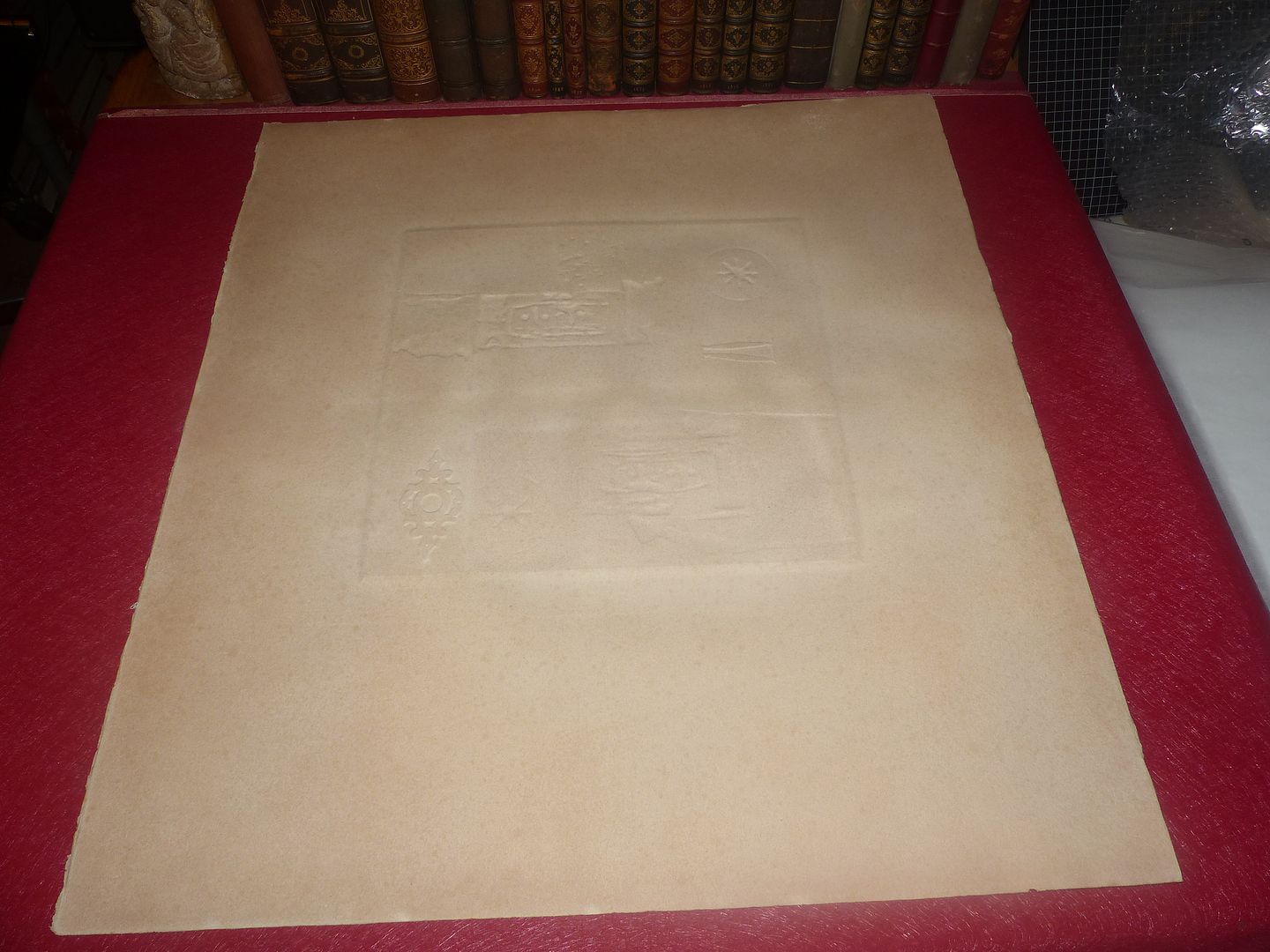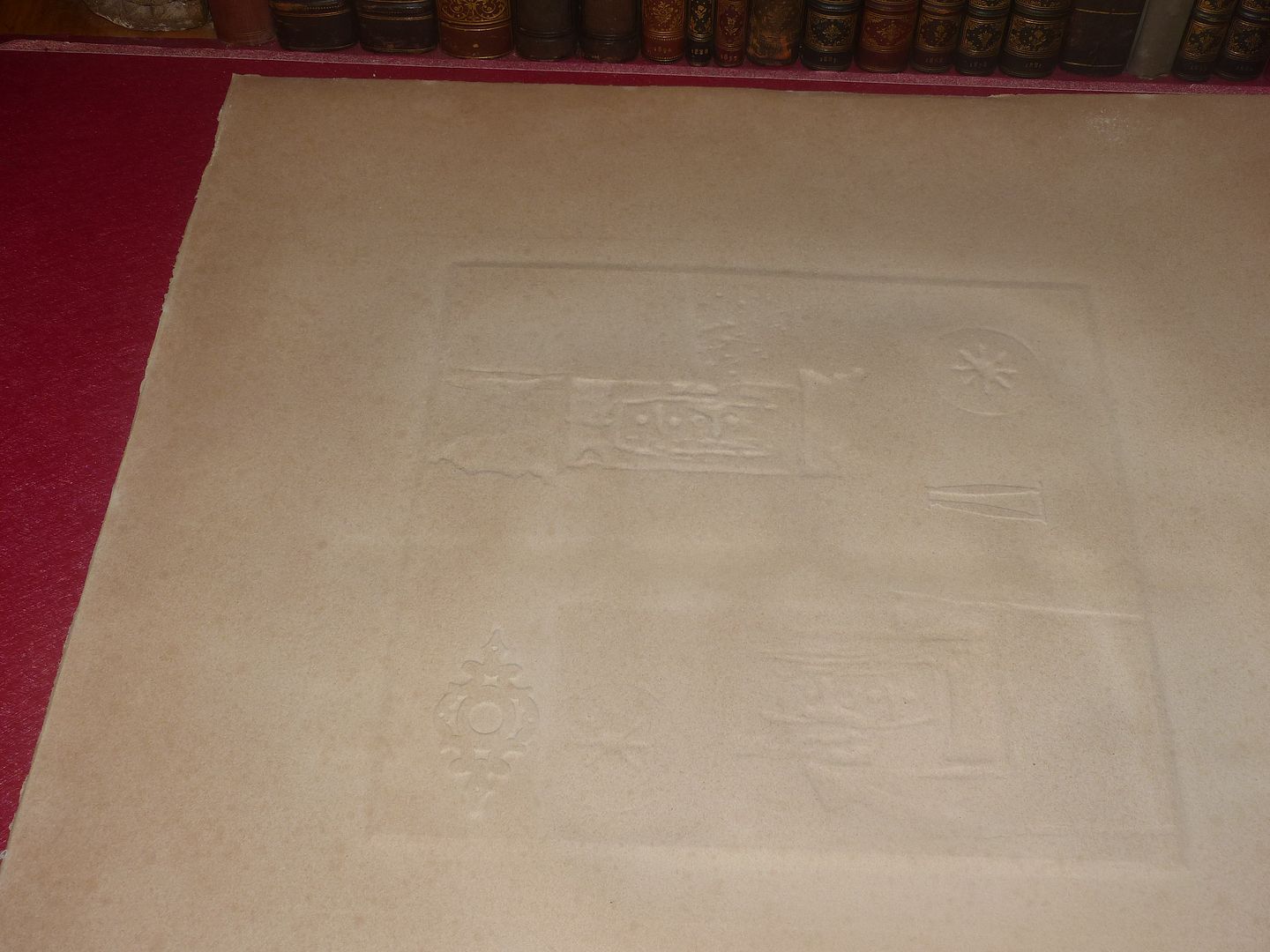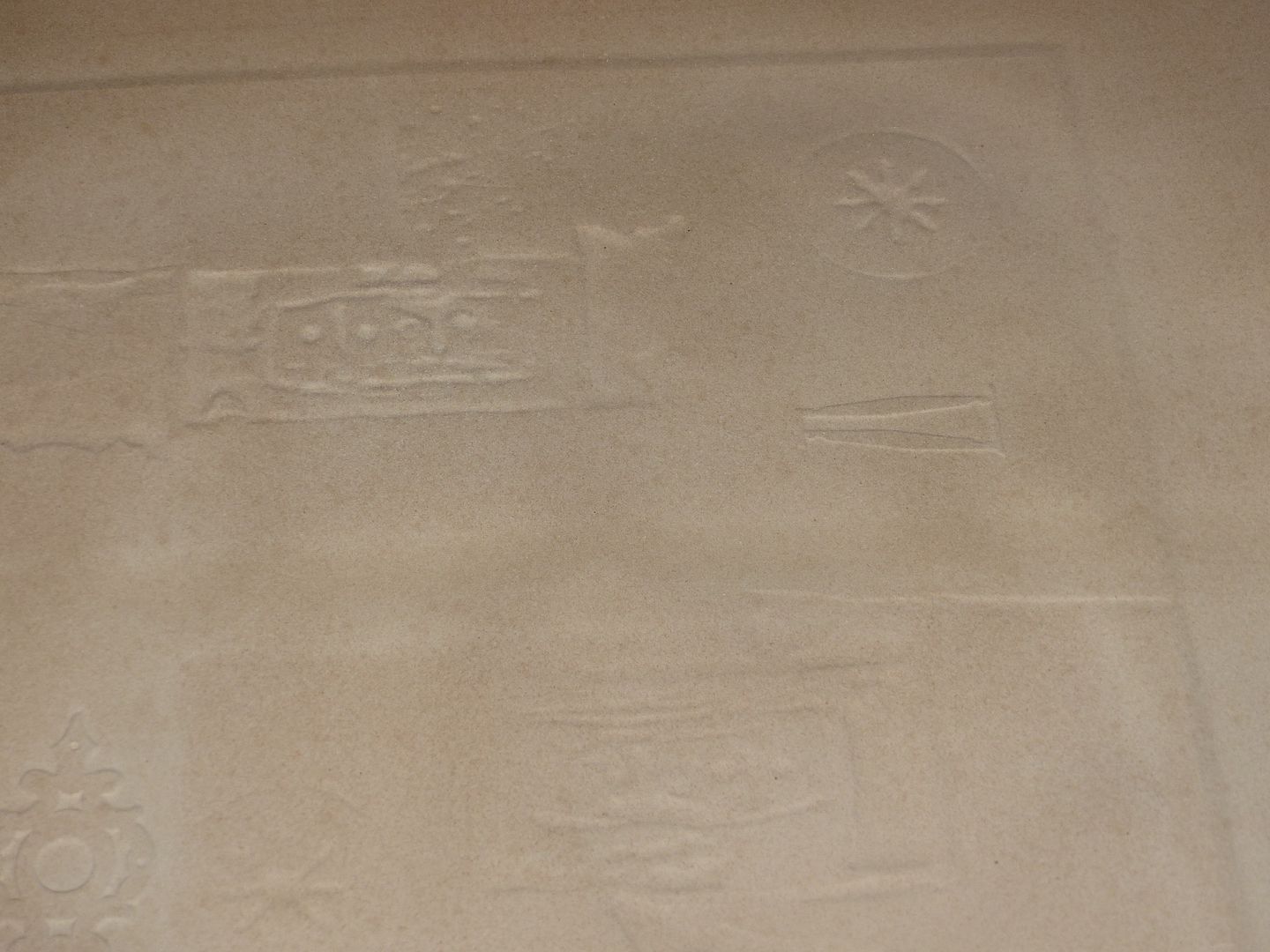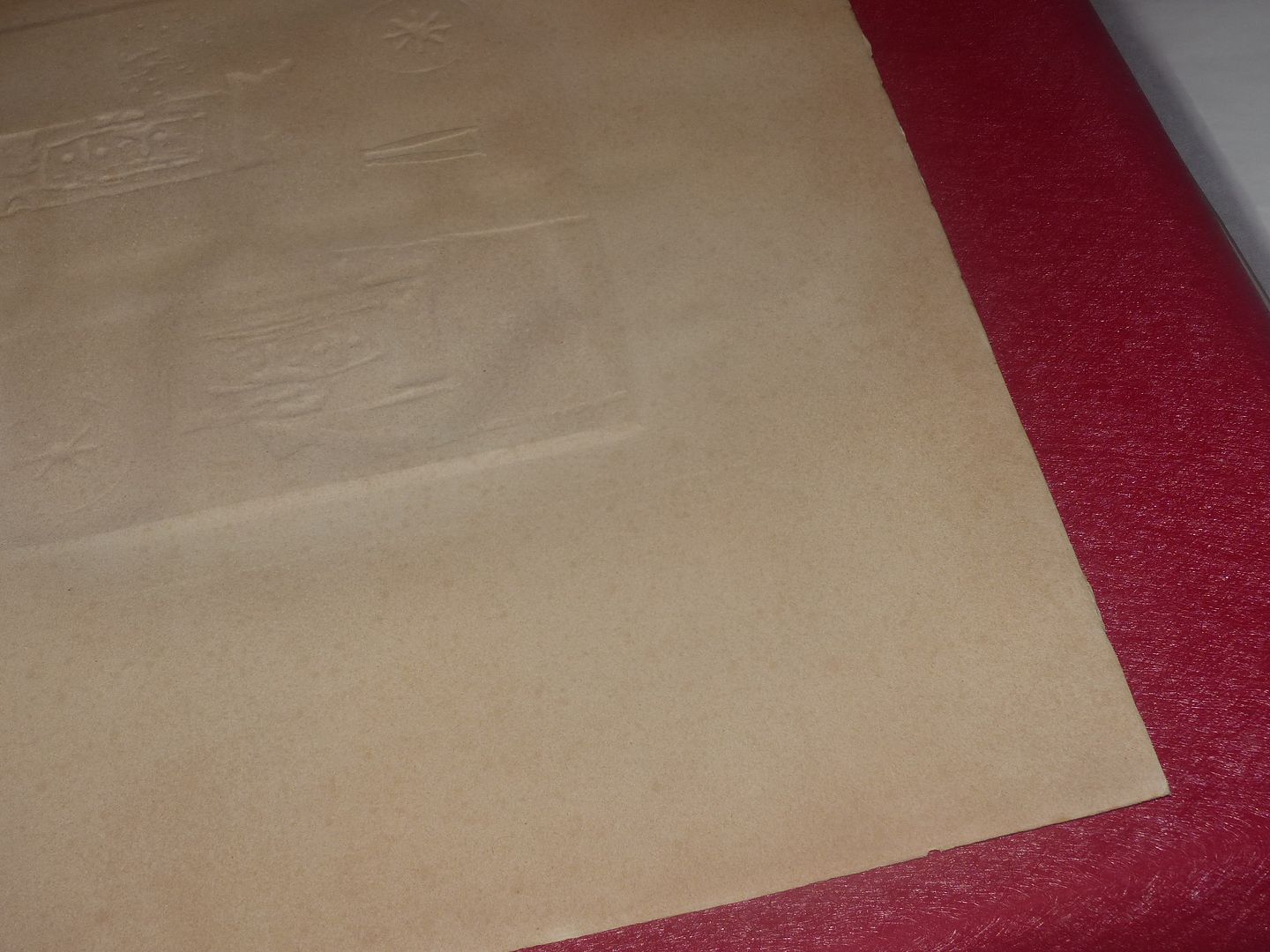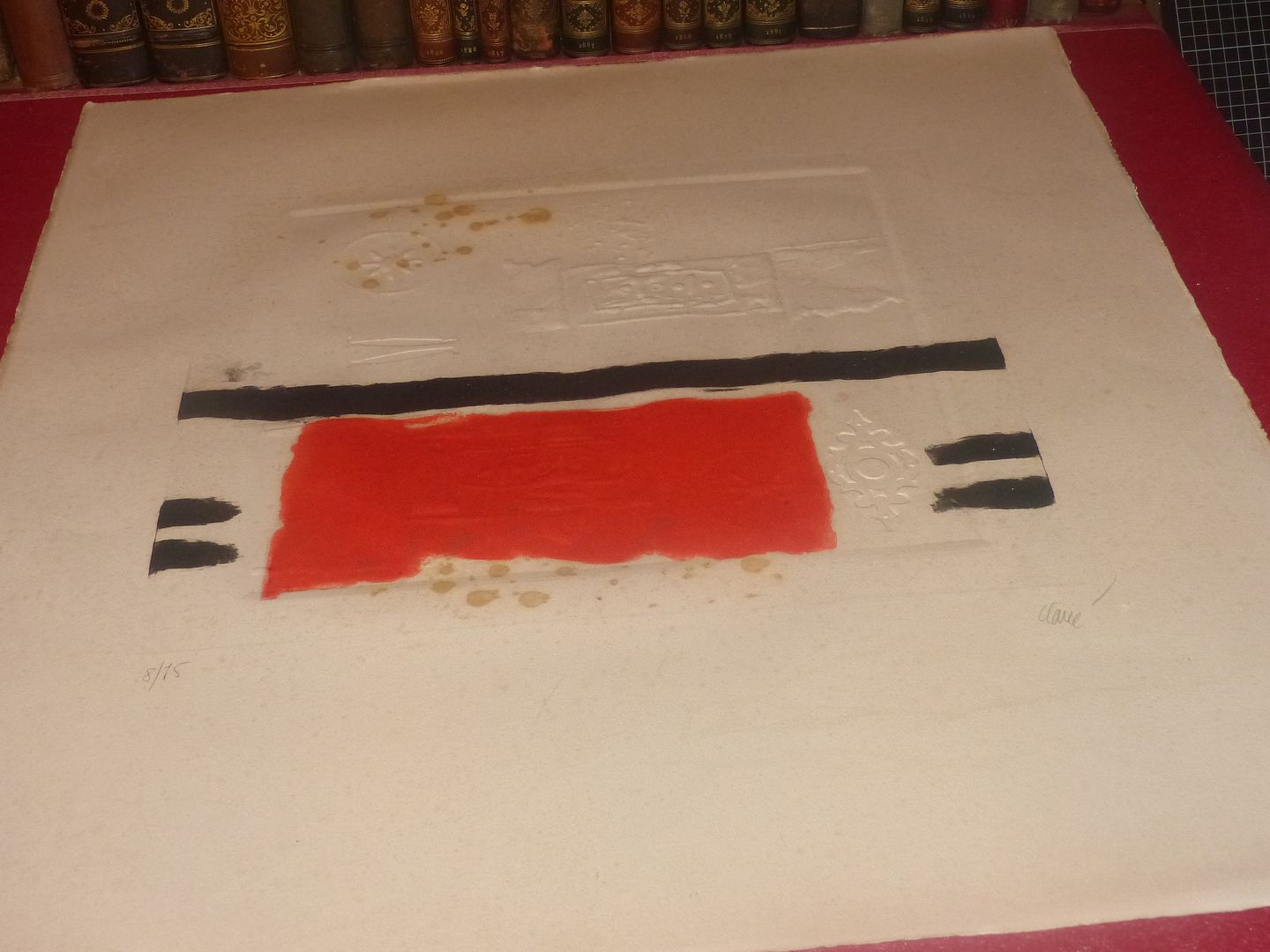[ABSTRACT ART - ORIGINAL ENGRAVING SIGNED BY THE ARTIST]
Antoni Clavé
1913-2005
Antoni Clavé
Activity period
from 1952
Painter, engraver, costume designer, designer, sculptor, graphic artist
Antoni Clavé, born April 5, 1913 in Barcelona (Spain) and died August 31, 2005 in Saint-Tropez (Var),
is a Spanish painter, engraver and sculptor.
Biography
The first years
When, when Antoni Clavé i Sanmartí was only two years old, his father left the family home,
his mother, who was a hairdresser, moved to No. 56 Calle Valdonzella, in Barcelona, to live there until 1934. Antoni studied at the San Lorenzo college, then at the Spanish-American college in Barcelona.
After having been a clerk in a fabric house for girdles and corsets in 1925, Antoni Clavé i Sanmartí entered evening classes at the Llotja School in 1926 (an annex school on Calle Aribau, only attending the main school from 1930 to 1932), having as masters Felix Mestres (ca), José Mongrell (es) (drawing) and Ángel Ferrant (es) (modelling), and his family let him pursue his path.
From his time in the workshop of Àngel Ferrant, “great champion of the avant-garde”, he will keep in particular the terracotta bust of Àngel Guimerà which he executed there and which will remain the initial witness “of his pleasure in creating shapes in clay and his interest in sculpture.
Antoni Clavé was recommended in 1927 to Aureli Tolosa (ca), owner of a painting company
in construction where he became an apprentice. Attracted by the artisanal side of the profession where he learned to make minium, then to paint wood, to handle brushes, to draw letters, Clavé, in 1928, began to paint the portrait of his grandmother in oil . His boss taught him in particular to copy Vélasquez, which Clavé accomplished.
“with all the perfection of which he is capable, for The Surrender of Breda”.
In 1932 he won second prize in the Barcelona Savings Bank poster competition.
and, the following year, abandoned building painting to make a living from his drawings, decoration work, illustrations for children's magazines and above all, recruited for this purpose by Sixte Illescas (ca), architect of the Spanish National Cinematheque ( CINAES), the design of “cinema posters to which he integrates, not without an avant-garde spirit, collages of materials of all kinds” ranging from ropes to printed fabrics and corrugated cardboard to newspaper fragments. He quickly made a name for himself in this specialty which completely absorbed his year 1935 and nevertheless continued his research into new materials with Salvador Ortiga, his fellow student from La Llotja, his other friends then being Emilio Grau Sala, Apelles Fenosa, Manolo, Eudald Serra ( es).
At the same time, Clavé particularly admired the Catalan primitives.
The Spanish War and confinement
A year after the start of the Spanish Civil War, Clavé was mobilized on the Republican front of Aragon, second class infantryman. He is a designer and creator of sets for the theater of the armies with his friend Marti Bas (1910-1966), future lithographer and illustrator of Henry de Montherlant.
In January 1939, Clavé was forced to follow the retreat of the Republican army and he crossed the French border, "mixed with the anonymous mass of Republicans who crossed the Pyrenees on foot, in search of freedom, in the greatest movement of emigration experienced by Europe in the 20th century.
Cruel paradox: the French Popular Front government immediately offers them its concentration camps, where living conditions are the harshest, as asylum.” Clavé was interned at the same time as Pedro Florès, first at the Prats-de-Mollo camp, “reception center for Spaniards and members of the International Brigades”, then at the Haras camp, in Perpignan, from which both were released thanks to the action of Martin Vivès, painter at the same time as secretary of the town hall of Perpignan: Clavé furnishing the time of his internment with sketches of his companions in confinement and Senegalese camp guards,
“Vivès, who was trying to help interned Spanish artists, was excited and took steps to obtain his release. He took him into his home for two months, providing him with colors and canvases to enable him to paint.” That same year, he had his first exhibition at Vivant, a pastry-tea room run in Perpignan by Marie Martín. On April 5, 1939, thanks to the two thousand francs that this exhibition brought him, he left Perpignan for Paris where the Catalan doctor Enguera de Sojo lent him a maid's room in Neuilly.
In Paris under the Occupation
In Paris, for four years he made a living from his former job as a children's illustrator (he even put The Sign of Zorro into strips for a magazine), tried his hand at lithography in Edmond Desjobert's workshop while continuing the painting in a style then influenced by Pierre Bonnard, Édouard Vuillard, but also Georges Rouault and Chaïm Soutine. In 1941, he set up his first workshop at no. 45 rue Boissonade in Paris.
He felt two immense joys with the birth of his son Jacques on Mars 20, 1942 and, the following May, the arrival in Paris of his mother who was able to cross the border thanks to friendly friends, including Emilio Grau Sala: upon contact with him, she began to make “gouaches with a naive flavor” and died in February 1959, “leaving him distraught like a little child, sick with grief”.
1942 is also the year of the first Parisian exhibition, at the same time as Emilio Grau Sala
and Marti Bas, at the Castelucho Gallery.
Antoni Clavé's first meeting with Pablo Picasso, in the latter's studio on rue des Grands-Augustins, dates very precisely from August 25, 1944, the day of the Liberation of Paris, and is a revelation:
“for two years,” he himself will recall with modesty, “I did sous-Bonnard and sous-Vuillard without realizing it. In 1942, I even painted a portrait of my mother who was definitely a Vuillard, but less good.” As soon as he approached Picasso and Cubism, he began to practice “collage on cardboard, wallpaper, string, rope, etc. and launched into lithography” with his works of bibliophilic illustrations (Les Lettres d'Espagne, Carmen).
Post-war and success
Antoni Clavé's submission to the Salon d'Automne in 1944 is cited by René Huyghe and Jean Rudel "among the notable works of artists promised to glory" with those of Jean Aujame, Jean Bazaine, Jacques Despierre, Léon Gischia, Jean Le Moal, Alfred Manessier, André Marchand, Mario Prassinos and Gustave Singier. The artist then participated in the founding of the Casal de Catalunya in Paris, created on July 9, 1945 and, in 1946, he was invited to Czechoslovakia, with several painters including Pablo Picasso, on the occasion of an exhibition dedicated to Spanish artists. . In 1947 he traveled to the United Kingdom for his first solo exhibition in London, then, in 1952, to the United States.
Roland Petit
Like Picasso, whose lasting friend he became, Antoni Clavé was very inspired by bullfighting. On this subject, he produced a large number of lithographs, notably La Corrida and Toreros whose costume he performed (Torero in red costume) for the choreographer Boris Kochno, whose ballet Los Caprichos had been given in 1943 by the company les Ballets des Champs-Élysées directed by Roland Petit.
Enjoying great success for his theater and ballet sets, he remains perceived as “one of the most important theater designers of the post-war period, using the stage space in its entirety, not only as a painter, but also as a director, with a chromaticism ranging from the most violent red to the deepest gray.” At the beginning of the 1950s, he worked with Roland Petit, offering to Raymond Cogniat to restore that "his flexibility of style, his richness of invention which goes from the greatest dramatic intensity to the most obvious irony, serves Carmen as well in 1949 than Mourning in 24 hours in 1953", but decided to paint and stop decorating in 1954. From this moment, Clavé will no longer accept new commissions for the theater, the fact remains that “the figures of the theater will have inspired him a universe of semi-popular, dark and monumental figures,
of a vigorous strangeness.
He set up a workshop which, located at no. 4 rue de Châtillon in Paris and opening onto a tiny garden, was invaded by heterogeneous objects, a stuffed bull's head, mannequins, sets reminiscent of the backstage of a theater and from a reproduction of Guernica. The house is now demolished.
Clavé works relentlessly, confronting, observes Jean Cassou, “the ardor of his native land with the inventions of French painting”. Unclassifiable, neither figurative nor abstract and both at the same time with his strength and his mystery, “lithographer and engraver with exceptional linework”, he also loves collages and willingly indulges in the chance of creation. As for sculpture, he was only interested in it periodically, at the beginning of his career and then much later. At the end of the 1950s, Clavé enjoyed success. But in 1963, he questioned himself: he was fifty years old, a considerable body of work. He is recognized in France, the United States, Japan, Switzerland, Sweden, his paintings are sought all over the world, which worries him. He decides to leave Paris and the society that makes fashion, particularly the world of entertainment.
The house of Saint-Tropez
Antoni Clavé left Paris for Saint-Tropez in 1965. He built a workshop and a house in Cap Saint-Pierre which he decorated with meticulous care, helped by his wife Madeleine. Both achieve a
“Palace of colors” with hangings. This is where the painter's largest canvases will be composed:
from this new life “whose climate is similar to that of his native land, and perhaps for this reason, his very Hispanic exuberance flourished. It makes colors emerge, more dazzling when confronted with black", offering Pierre Cabanne to write that "with it we enter into
the echo chambers of color.
Henri Goetz
In Saint-Tropez, where he reserved a workshop exclusively for engraving, Antoni Clavé, upon returning from a stay in Barcelona in 1965 where he learned about etching and aquatint, abandoned lithography in favor of of the
intaglio, and pays homage in a series of plates to Rembrandt, Goya and Albrecht Dürer.
It was in 1968 that he discovered the carborundum engraving, recently developed by Henri Goetz.
In 1977, he exhibited his first trompe l'oeil collages, an effect he obtained by airbrushing onto crumpled paper or stencils. In 1984, when the Venice Biennale exhibited more than a hundred of his works in the Spanish pavilion, he was awarded the Gold Medal for Merit in Fine Arts by the Ministry of Education, Culture and SPORTS of Spain .
Antoni Clavé, suffering from respiratory failure, died on August 31, 2005 and was buried in the Montparnasse cemetery in Paris. In him we then salute “the spirit rebelling against conventions, in perpetual creative evolution, which knew how to transform the heritage of Bonnard and Vuillard to offer us the most beautiful spectacle: astonishment”.
Posterity
It was at the end of the 1980s that Antoni Clavé was officially recognized by the Catalan authorities. The painter, from then on and still today, “offers for his country the image of an uprooted Catalan that we reappropriate in order to better affirm a national identity”. We are thus witnessing, within the framework of the cultural policy carried out in the 1990s, a reappropriation of the painter. “The recognition of Clavé's work is late, notes Catherine Xerri, Catalan art having perhaps been symbolized for too long by a single figure, that of Tàpies: this recognition goes hand in hand with a double challenge, identity and cultural ".
As for the work, “although inviting silence and contemplation because of the nobility and imposing power it exudes, we will read eleven years after the death of Antoni Clavé in the catalog from his retrospective at the Espace Paul-Rebeyrolle, his painting is nevertheless filled with noise and fury, until reaching a fragile balance between order and disorder, tension and fragility. But “there remain secrets
workshop" would specify shortly after Aude Hendgen, and "this is perhaps what gives the strength of his engraved work: this impossibility of fully grasping the process which brought him into the world, which leaves Antoni Clavé a veil of mystery, a somewhat magical unintelligibility.”
ANTONI CLAVE
1913-2005
"Abstract Composition - Stars and Warriors"
|Ca 1970]
Original engraving with Carborundum
(etching, carborundum and embossing)
justified and signed in pencil by the Artist
justified and signed in pencil by the Artist
The total print run is 75 copies.
on watermarked Arches paper
[8/75]
-
Board size: approximately 63 x 56 cm
Good condition,
edges, margins and back a little yellowed as usual,
small folds on the edges of the sheet, light or small breaks
various inevitable traces of handling, some very faint scattered pale bites,
minimal various traces or dirt in the margins
(Note: brown spots are part of the composition..."Dripping")
see visuals...
Very rare and beautiful engraving!
Very rare and beautiful engraving!
Sought after for its very original composition
Sold as described, as found...
Sold as described, as found...
